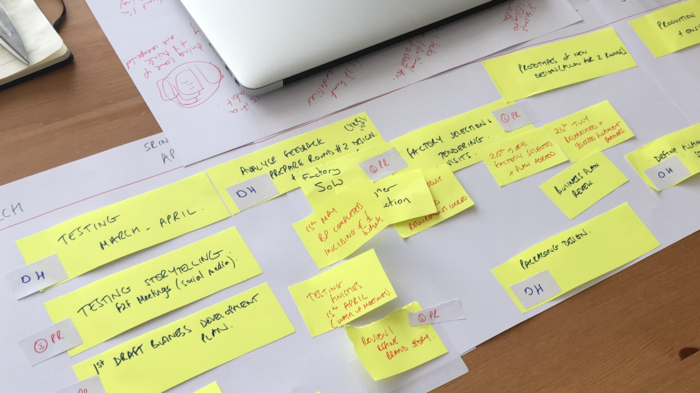Okay, let’s get something off my chest straight away: I used to think that “AI will revolutionize project management” was the kind of phrase you hear from a man in skinny jeans trying to sell you a webinar about synergy. It sounded about as useful as Google Glass or an app that tells you how your basil plant is feeling. Complete nonsense. In my mind, it meant robot overlords with laser pointers and Gantt charts, barking orders like a corporate cyborg with an MBA. Or worse, those sickly-sweet virtual assistants with voices like airhostesses reading from a script, micromanaging my team to death. But now, brace yourself, I owe AI a thank-you card. I know, shocking. Because instead of replacing me, it’s made me… better. Sharper. Faster. Less irritable in meetings (well, slightly). And before you ask…no, this isn’t sponsored content. I genuinely mean it!

AI: From Buzzword to Backbone
Back in 2024, AI finally stopped being that flashy new intern who spills coffee everywhere and became something useful. A proper co-pilot. The kind of wingman who doesn’t just nod along, but who crunches numbers, predicts risk, and schedules meetings without whining. Imagine having someone in your team who never sleeps, never eats, and never rolls their eyes when asked for a project status report. That’s AI. It’s like hiring an overachieving alien who actually likes admin. Suddenly, planning meetings were shorter. Risk reports made sense. Timelines stopped sounding like fairy tales. And, God help me, even Jira became… usable. Not delightful. But tolerable. Tools like Microsoft Copilot, Notion AI, and ClickUp’s automation suite changed the game. Add AI-native platforms like Forecast and Project Insight into the mix, and suddenly, our dusty PMOs felt like command centers in a sci-fi movie.
Even the blue suits at PMI, IPMA, and APM couldn’t ignore the AI tide.
- PMI’s 2024 Pulse of the Profession read like an AI fan letter. They declared that AI-enhanced decision-making is now the secret weapon of high-performing organizations. They even added “Digital Fluency” to their Talent Triangle. Translation? Get comfortable with algorithms or get left behind.
- IPMA offered a European take, celebrating AI as an enabler for ethical, sustainable project delivery. They praised its potential for scenario modeling and cross-border teamwork. Their advice? Use it, but don’t lose the human plot.
- APM chimed in with a white paper, AI for project management: what does it actually mean? Their thesis? The PM of tomorrow is a hybrid: not just leading, but orchestrating both human and machine intelligence. Kind of like a conductor—if the orchestra included a very clever toaster.
Bookshelf Confession: Yes, I Read the Whole Stack
Project managers love a good framework so let’s talk books because naturally, I dove into the literature hoping to find clarity.
- Ethan Mollick’s Co-Intelligence reads like a cross between a TED Talk and a warm hug. Quite good, actually. Makes you feel like AI is your buddy.
- Mike Walsh’s Algorithmic Leader? Basically a manual for anyone whose team is already smarter than them (so, all of us).
- And then there’s The Project Management AI Handbook by Gustavo Vinueza and Prasad Kodukula, which explains—thankfully in plain English—how AI helps you stop messing about with spreadsheets and get on with real work.
- Mary Hladio’s Transforming Project Management with Generative AI takes a gentler tone. Less Skynet, more sensible Aunt teaching you to use ChatGPT without blowing something up.
What AI Actually Changed (And What It Didn’t)
Let’s skip the marketing fluff. Here’s what changed for me:
- Time tracking? Automated. Quiet. Weirdly polite.
- Status reports? Done. No typos. No whining. No “just checking in” emails.
- Risk forecasting? Real-time. Accurate. Almost spooky.
- Stakeholder updates? Auto-generated videos. Yes, really. With slides. And a synthetic voice that sounds slightly more confident than me.
- Task prioritisation? AI sorts it all based on impact and workload. Not by who shouted loudest. Revolutionary.
But here’s the thing: AI didn’t just tidy up the chaos. It gave me back time. Time to lead. Time to talk to people. Time to think… remember thinking? Of course, it’s not perfect. AI can’t see the tired eyes of your developer on Zoom. It can’t sense the quiet burnout that’s building like a storm. It can flag resource conflicts, but it won’t tell you that your designer is quietly dealing with burnout. Case in point: our AI assistant, Marvin (yes, we named it), flagged a resource risk. The data looked fine, but I felt something was off. A one-on-one revealed the truth: personal stress and looming burnout. AI lit the beacon, but the human needed to knock on the door. The irony? By offloading the technical clutter to machines, we had more space to be human. Empathy, listening, trust—those moved to center stage. And honestly? That shift was overdue. It turns out leadership isn’t about controlling everything; it’s about showing up when it counts.
Looking Ahead
What’s next? Smarter bots. More dashboards. Even more unsettlingly accurate reminders that you’re overdue on something you didn’t even remember assigning. But also: more responsibility. Can we teach AI our values? Can we use it to build teams that are not just efficient, but inclusive, creative, and, dare I say… happy? My guess? The best project managers in five years won’t be the ones with the flashiest tools. They’ll be the ones who know when to shut the damn thing off and just ask someone how they’re doing.

Thanks for reading. Got a story about AI saving your project (or wrecking it)? Let’s swap war stories over virtual coffee. I’ll be the one letting the bot take notes while I actually talk to people.




